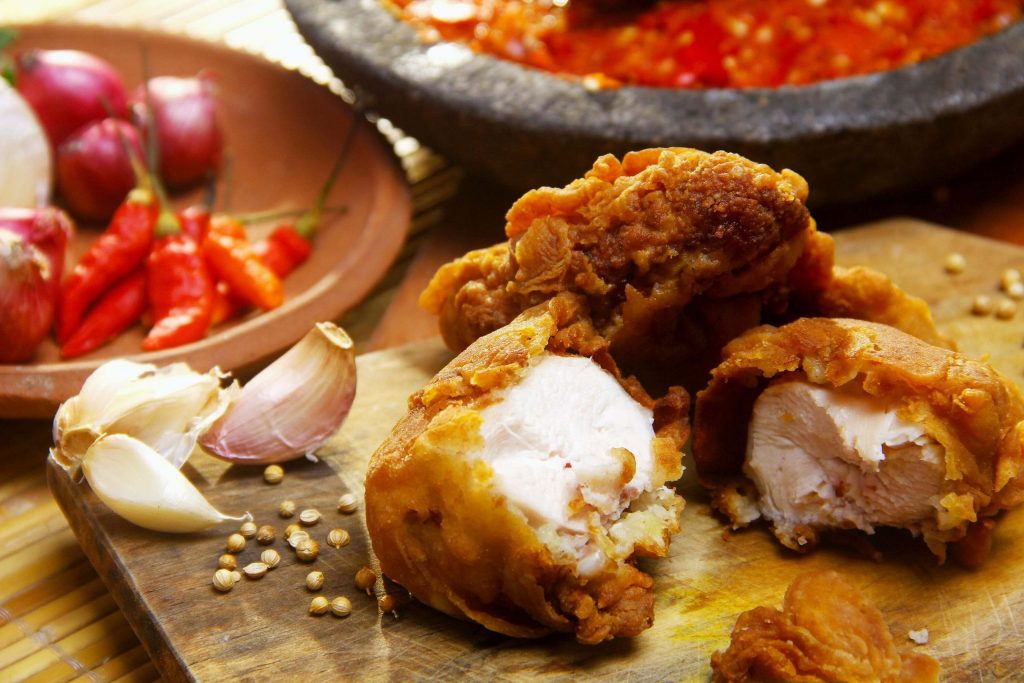What is the best egg substitute for frying chicken?
Do you need an egg substitute for frying chicken? Have you ever found yourself craving that satisfying crunch of perfectly fried chicken, only to realize you’re out of eggs? It’s happened to me more times than I can count. So, today we’re delving into the world of egg substitutes for frying chicken, and trust me, there’s more than meets the eye.
You see, when it comes to frying chicken, most people default to using eggs as a binding agent for the breading. But there are other alternatives that not only do the job but might even elevate your fried chicken game to a whole new level?
So, with a little creativity and experimentation, you can achieve mouthwatering results without a single egg in sight. Give it a try, who knows, you might just discover your new favorite way to fry chicken.
So here are are my top eight egg substitutes for frying chicken: Flour and Water, Plain Yogurt, Mashed Avocado, Carbonated Water, Buttermilk, Olive Oil, Mayonnaise, or Heavy Cream.
Out of those options I found the best, and easiest one to use, was the flour and water mix (slurry). It gave delicious results every time.
What can I use as an egg substitute for frying chicken?
Here are some of the best ingredients to substitute the flavor and role that egg provides when frying chicken.
- Flour and Water
- Plain Yogurt
- Mashed Avocado
- Carbonated Water
- Buttermilk
- Olive Oil
- Mayonnaise
- Heavy Cream
Egg substitute for frying chicken
Flour and Water
My top recommendation is to use flour and water as an egg substitute for frying chicken. It’s really quite simple to do. Here’s a basic method to follow:
- Prepare the Flour Mixture: Start by mxing all-purpose flour with water to create a thick paste. I use the 2:1 ratio, so 2 tablespons of water to 1 tablespoon of flour. The consistency should be similar to pancake batter, thick enough to coat the chicken but still spreadable. Just increase the quantities of flour and water until you have enough to coat the amount of chicken you are cooking.
- Seasoning: Optionally, you can season the flour mixture with your favorite spices and herbs. Common seasonings include salt, pepper, paprika, garlic powder, and onion powder.
- Coating the Chicken: Dip each piece of chicken into the flour mixture, making sure to coat it evenly on all sides. Shake off any excess flour before proceeding to the next step.
- Double Dipping (Optional): For extra crispy chicken, you can double dip the chicken. After coating the chicken in the flour mixture, dip it again into water or buttermilk. Finally coat them again in the flour mixture.
- Frying: Heat oil in a frying pan or deep fryer to the appropriate temperature for frying chicken (usually around 350°F or 175°C). Carefully place the coated chicken pieces into the hot oil, making sure not to overcrowd the pan.
- Fry Until Golden Brown: Fry the chicken pieces until they are golden brown and crispy on the outside, and the internal temperature reaches 165°F (75°C) for safety.
- Drain Excess Oil: Once cooked, remove the chicken from the oil and place it on a wire rack or paper towels to drain any excess oil. You can place the chicken in a warm oven until you are ready to serve.
- Serve: Serve the crispy fried chicken hot and enjoy!
By following these simple steps, you can achieve crispy and flavorful fried chicken using a flour and water mixture as an egg substitute. Feel free to customize the seasonings and adjust the thickness of the flour mixture to suit your taste preferences.
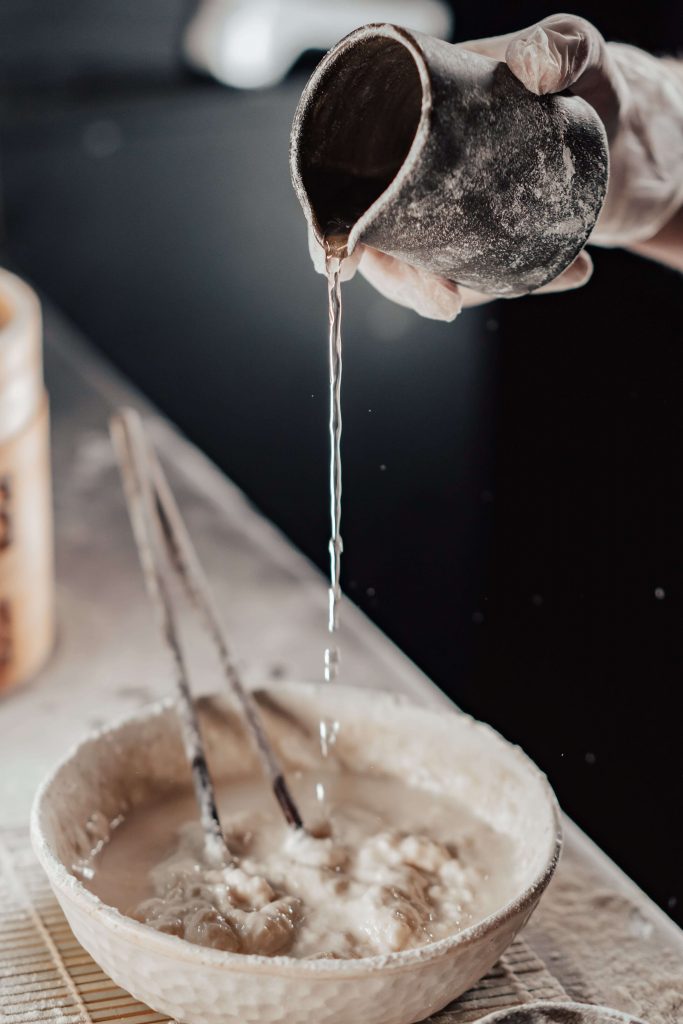
Plain Yogurt
Using plain yogurt as an egg substitute for frying chicken is a simple process. Here’s how you can do it:
- Prepare the Yogurt Mixture: Start by pouring plain yogurt into a shallow dish. You can use Greek yogurt or regular yogurt, but make sure it’s plain and not flavored. You can also use fat-free yogurt if you need a healthy option, but remember the yogurt will be slightly runnier.
- Thin the Yogurt (Optional): If the yogurt is too thick, you can thin it out with a bit of water or milk to achieve a more pourable consistency. This will help the breading adhere better to the chicken.
- Seasoning: Optionally, you can season the yogurt with salt, pepper, garlic powder, paprika, or any other seasonings of your choice to add flavor to the chicken.
- Coating the Chicken: Dip each piece of chicken into the yogurt mixture, ensuring it is evenly coated on all sides. Make sure to shake off any excess yogurt before proceeding to the next step.
- Breading: After coating the chicken in yogurt, dredge it in your favorite breading mixture. This could be seasoned flour, breadcrumbs, cornmeal, or a combination of these.
- Double Coating (Optional): For an extra crispy coating, you can double coat the chicken by dipping it back into the yogurt mixture and then back into the breading mixture again.
- Frying: Heat oil in a frying pan or deep fryer to the appropriate temperature for frying chicken (usually around 350°F or 175°C). Carefully place the coated chicken pieces into the hot oil, making sure not to overcrowd the pan.
- Fry Until Golden Brown: Fry the chicken until it is golden brown and crispy on the outside, and the internal temperature reaches 165°F (75°C) for safety.
- Drain Excess Oil: Once cooked, remove the chicken from the oil and place it on a wire rack or paper towels to drain any excess oil.
- Serve: Serve the crispy fried chicken hot and enjoy!
Using plain yogurt as an egg substitute adds moisture to the chicken while helping the breading adhere, resulting in deliciously crispy and flavorful fried chicken. Feel free to experiment with different seasonings and breading mixtures to customize the flavor to your liking.
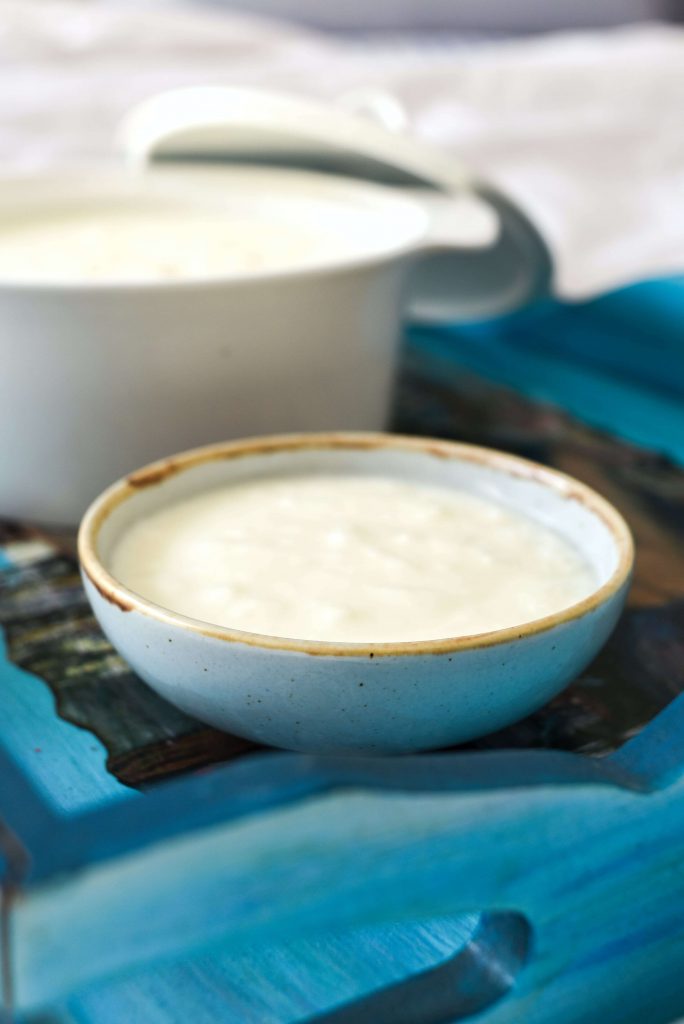
Mashed Avocado
Using mashed avocado as an egg substitute for frying chicken is a creative and healthy option. Here’s how you can do it:
- Prepare the Avocado Mixture: Start by mashing ripe avocado in a bowl until smooth. You can use a fork or a potato masher to achieve the desired consistency.
- Seasoning (Optional): Optionally, you can add seasonings to the mashed avocado to enhance the flavor of the chicken. Consider adding salt, pepper, garlic powder, or any other spices you enjoy.
- Coating the Chicken: Dip each piece of chicken into the mashed avocado, ensuring it is evenly coated on all sides. The natural creaminess of the avocado will help the breading adhere to the chicken.
- Breading: After coating the chicken in mashed avocado, dredge it in your favorite breading mixture. This could be seasoned flour, breadcrumbs, cornmeal, or a combination of these.
- Double Coating (Optional): For extra crispiness, you can double coat the chicken by dipping it back into the mashed avocado and then into the breading mixture again.
- Frying: Heat oil in a frying pan or deep fryer to the appropriate temperature for frying chicken (usually around 350°F or 175°C). Carefully place the coated chicken pieces into the hot oil, making sure not to overcrowd the pan.
- Fry Until Golden Brown: Fry the chicken until it is golden brown and crispy on the outside, and the internal temperature reaches 165°F (75°C) for safety.
- Drain Excess Oil: Once cooked, remove the chicken from the oil and place it on a wire rack or paper towels to drain any excess oil.
- Serve: Serve the crispy fried chicken hot and enjoy!
Using mashed avocado as an egg substitute adds a creamy texture to the chicken while providing healthy fats and nutrients. Experiment with different seasonings and breading mixtures to customize the flavor to your liking.
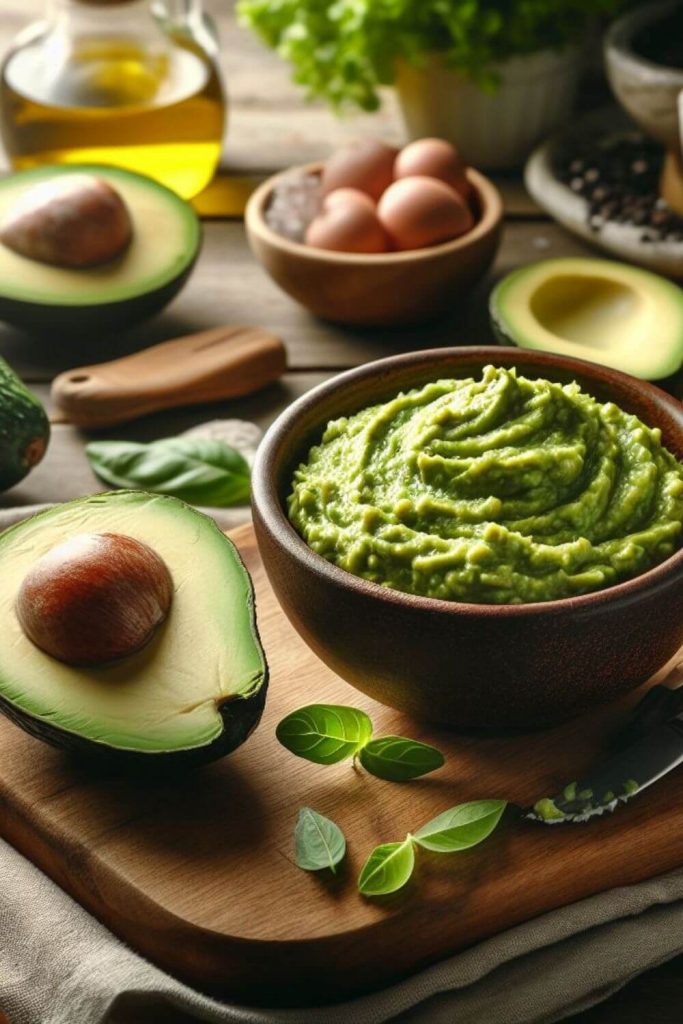
Carbonated Water
Using carbonated water as an egg substitute for frying chicken can result in a wonderfully light and crispy coating. Here’s how you can do it:
- Prepare the Chicken: Start by preparing your chicken pieces. You can use boneless chicken breasts, thighs, or drumsticks, depending on your preference.
- Carbonated Water Bath: Pour carbonated water into a shallow dish or bowl. The carbonation in the water will help create air pockets in the batter, resulting in a lighter and crispier coating. Make sure the carbonated water is cold for best results.
- Seasoning (Optional): Optionally, you can season the carbonated water with salt, pepper, garlic powder, or any other spices you like to add flavor to the chicken.
- Coating the Chicken: Dip each piece of chicken into the carbonated water, ensuring it is fully submerged. Allow any excess water to drip off before proceeding to the next step.
- Breading: After dipping the chicken in the carbonated water, dredge it in your favorite breading mixture. This could be seasoned flour, breadcrumbs, cornmeal, or a combination of these.
- Double Coating (Optional): For extra crispiness, you can double coat the chicken by dipping it back into the carbonated water and then into the breading mixture again.
- Frying: Heat oil in a frying pan or deep fryer to the appropriate temperature for frying chicken (usually around 350°F or 175°C). Carefully place the coated chicken pieces into the hot oil, making sure not to overcrowd the pan.
- Fry Until Golden Brown: Fry the chicken until it is golden brown and crispy on the outside, and the internal temperature reaches 165°F (75°C) for safety.
- Drain Excess Oil: Once cooked, remove the chicken from the oil and place it on a wire rack or paper towels to drain any excess oil.
- Serve: Serve the crispy fried chicken hot and enjoy!
Using carbonated water as an egg substitute adds a unique texture to the chicken while helping to create a light and airy coating. Experiment with different seasonings and breading mixtures to customize the flavor to your liking.
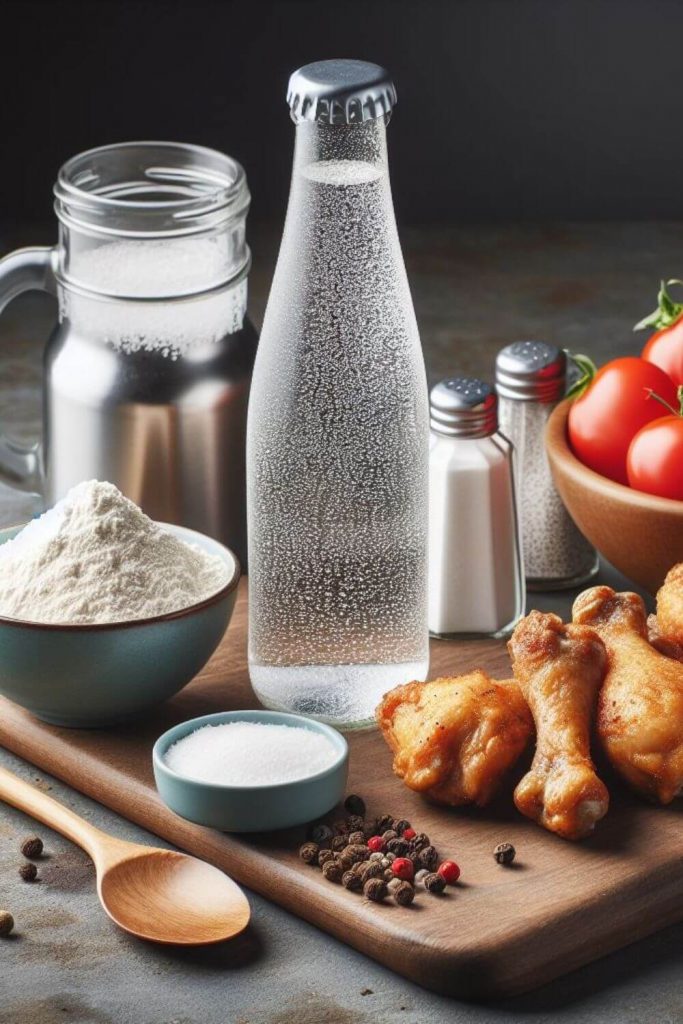
Buttermilk
Using buttermilk as an egg substitute for frying chicken is a classic and flavorful option. Here’s how you can do it:
- Prepare the Buttermilk Marinade: Start by pouring buttermilk into a shallow dish or bowl. Buttermilk adds moisture and tanginess to the chicken while helping the breading adhere.
- Seasoning (Optional): If you like, you can season the buttermilk with salt, pepper, garlic powder, paprika, or any other spices you enjoy to enhance the flavor of the chicken.
- Marinate the Chicken: Place the chicken pieces into the buttermilk mixture, ensuring they are fully submerged. Allow the chicken to marinate for at least 30 minutes, or if you plan ahead, overnight in the refrigerator. This helps tenderize the chicken and infuse it with flavor.
- Coating the Chicken: After marinating, remove the chicken from the buttermilk and allow any excess to drip off. Then, dredge the chicken pieces in your favorite breading mixture. This could be seasoned flour, breadcrumbs, cornmeal, or a combination of these.
- Double Coating (Optional): For extra crispy chicken, you can double coat the chicken by dipping it back into the buttermilk and then into the breading mixture again.
- Frying: Heat oil in a frying pan or deep fryer to the appropriate temperature for frying chicken (usually around 350°F or 175°C). Carefully place the coated chicken pieces into the hot oil, making sure not to overcrowd the pan.
- Fry Until Golden Brown: Fry the chicken until it is golden brown and crispy on the outside, and the internal temperature reaches 165°F (75°C) for safety.
- Drain Excess Oil: Once cooked, remove the chicken from the oil and place it on a wire rack or paper towels to drain any excess oil.
- Serve: Serve the crispy fried chicken hot and enjoy!
Using buttermilk as an egg substitute adds flavor and moisture to the chicken while helping to create a crispy and golden-brown crust. Feel free to experiment with different seasonings and breading mixtures to customize the flavor to your liking.
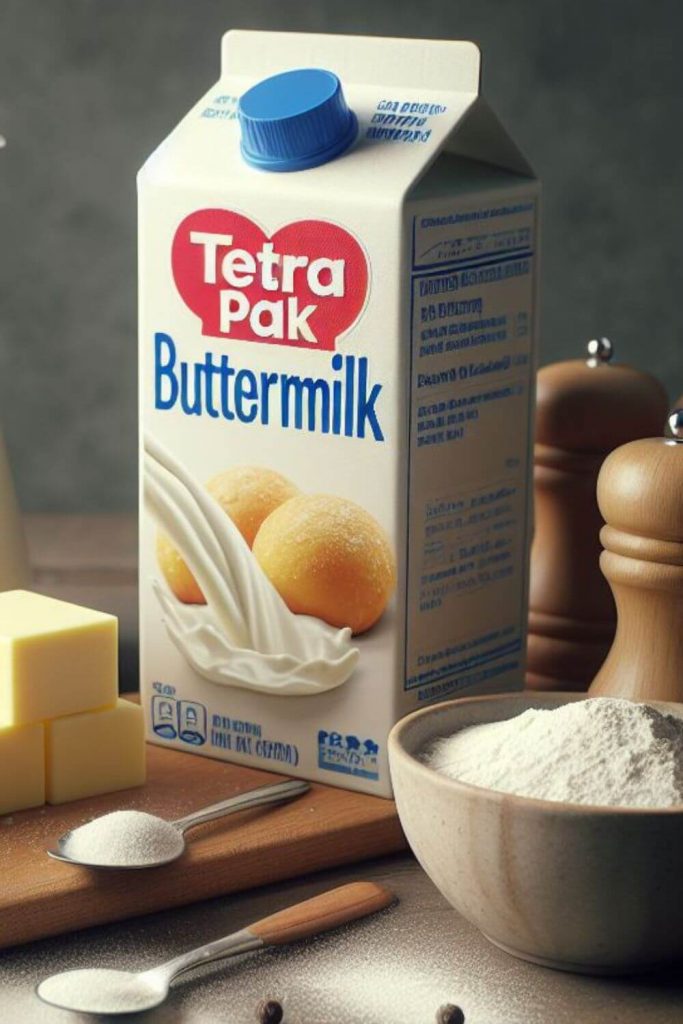
Olive Oil
Using olive oil as an egg substitute for frying chicken is a healthy and flavorful option. Here’s how you can do it:
- Prepare the Olive Oil Mixture: Start by pouring olive oil into a shallow dish or bowl. You can use extra virgin olive oil for its robust flavor or a lighter olive oil depending on your preference.
- Seasoning (Optional): Optionally, you can season the olive oil with salt, pepper, garlic powder, paprika, or any other spices you enjoy to enhance the flavor of the chicken.
- Coating the Chicken: Dip each piece of chicken into the olive oil. Roll the chicken pieces in the oil to ensure thy are evenly coated on all sides. The olive oil will help the breading adhere to the chicken and add richness to the flavor.
- Breading: After coating the chicken in olive oil, dredge it in your favorite breading mixture. This could be seasoned flour, breadcrumbs, cornmeal, or a combination of these.
- Double Coating (Optional): For extra crispy chicken, you can double coat the chicken by dipping it back into the olive oil and then into the breading mixture again.
- Frying: Heat olive oil in a frying pan or skillet over medium heat. Once the oil is hot, carefully place the coated chicken pieces into the pan, making sure not to overcrowd it.
- Cook Until Golden Brown: Fry the chicken until it is golden brown and crispy on the outside, and the internal temperature reaches 165°F (75°C) for safety. Depending on the thickness of the chicken, this usually takes about 5-7 minutes per side.
- Drain Excess Oil: Once cooked, remove the chicken from the pan and place it on a wire rack or paper towels to drain any excess oil.
- Serve: Serve the crispy fried chicken hot and enjoy!
Using olive oil as an egg substitute adds a distinctive flavor to the chicken while providing healthy fats and nutrients. Experiment with different seasonings and breading mixtures to customize the flavor to your liking.
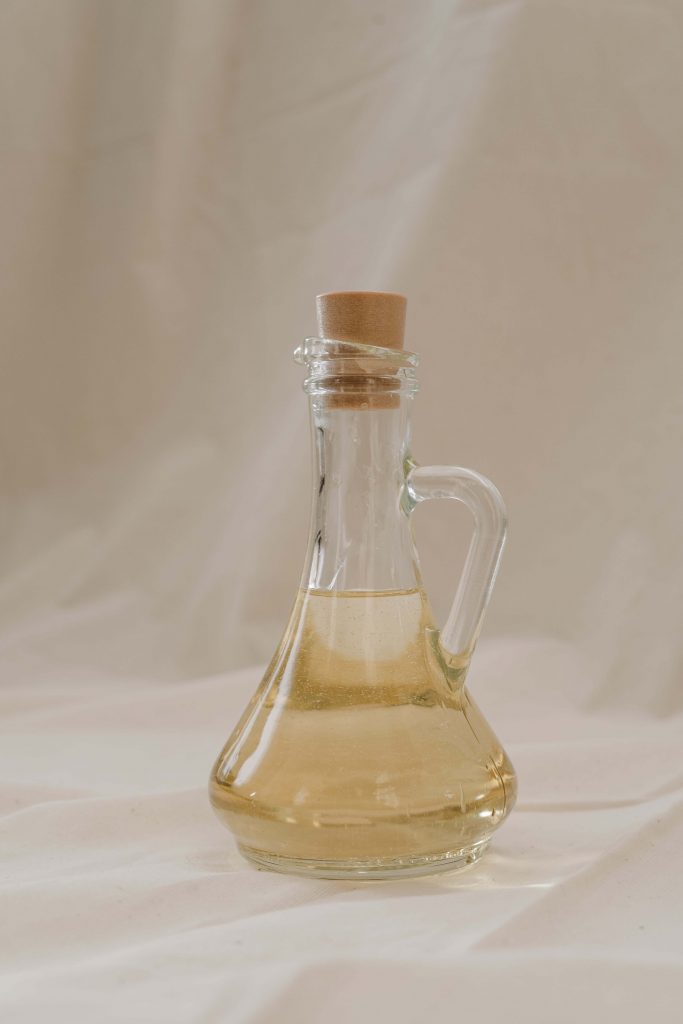
Mayonnaise
This is one that sounds a bit strange, but it actually works really well. Using mayonnaise as an egg substitute for frying chicken is a simple and effective method that results in a crispy and flavorful coating. Here’s how you can do it:
- Prepare the Chicken: Start by preparing your chicken pieces. You can use boneless chicken breasts, thighs, or drumsticks, depending on your preference.
- Coat with Mayonnaise: Spread a thin layer of mayonnaise over each piece of chicken. Make sure to coat the chicken evenly on all sides. The mayonnaise will act as a binder, helping the breading stick to the chicken while adding moisture and flavor.
- Seasoning (Optional): Optionally, you can season the chicken with salt, pepper, garlic powder, paprika, or any other spices you enjoy to enhance the flavor.
- Breading: After coating the chicken with mayonnaise, dredge it in your favorite breading mixture. This could be seasoned flour, breadcrumbs, cornmeal, or a combination of these.
- Double Coating (Optional): For extra crispiness, you can double coat the chicken by spreading another thin layer of mayonnaise over the breaded chicken and then dredging it in the breading mixture again.
- Frying: Heat oil in a frying pan or deep fryer to the appropriate temperature for frying chicken (usually around 350°F or 175°C). Carefully place the coated chicken pieces into the hot oil, making sure not to overcrowd the pan.
- Fry Until Golden Brown: Fry the chicken until it is golden brown and crispy on the outside, and the internal temperature reaches 165°F (75°C) for safety.
- Drain Excess Oil: Once cooked, remove the chicken from the oil and place it on a wire rack or paper towels to drain any excess oil.
- Serve: Serve the crispy fried chicken hot and enjoy!
Using mayonnaise as an egg substitute adds richness and flavor to the chicken while ensuring a crispy and golden-brown crust. Experiment with different seasonings and breading mixtures to customize the flavor to your liking.
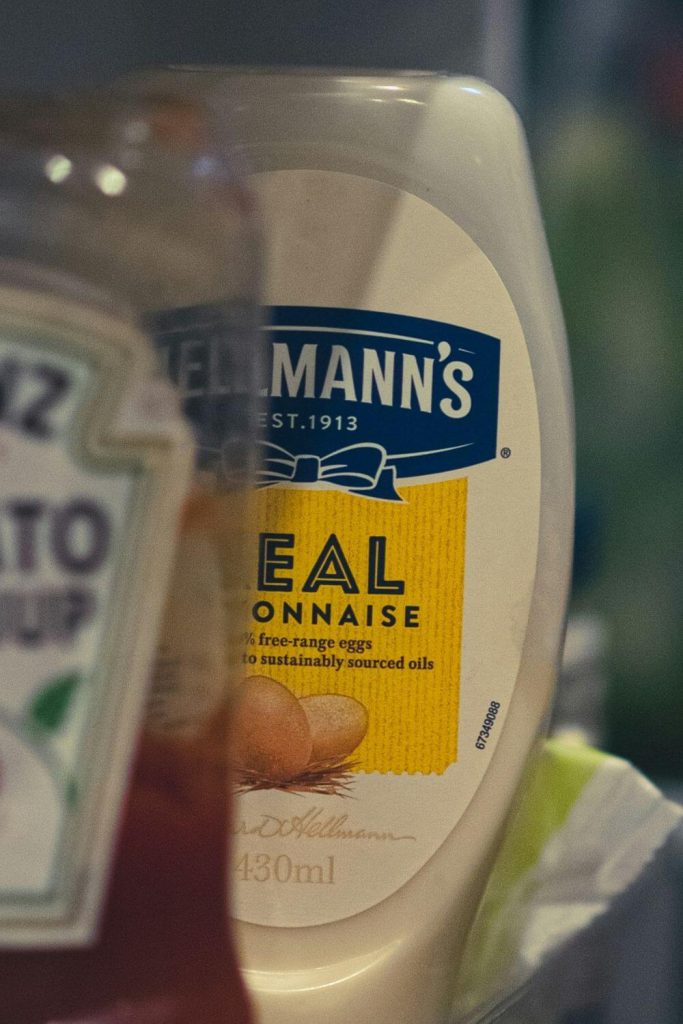
Heavy Cream
Using heavy cream as an egg substitute for frying chicken is a decadent and flavorful option that adds richness to the coating. Here’s how you can do it:
- Prepare the Chicken: Start by preparing your chicken pieces. You can use boneless chicken breasts, thighs, or drumsticks, depending on your preference.
- Coat with Heavy Cream: Pour heavy cream into a shallow dish or bowl. Dip each piece of chicken into the heavy cream, ensuring it is fully coated on all sides. The heavy cream will act as a binder, helping the breading adhere to the chicken while adding moisture and richness.
- Seasoning (Optional): Optionally, you can season the chicken with salt, pepper, garlic powder, paprika.
- Breading: After coating the chicken with heavy cream, dredge it in your favorite breading mixture. This could be seasoned flour, breadcrumbs, cornmeal, or a combination of these.
- Double Coating (Optional): For extra crispiness, you can double coat the chicken by dipping it back into the heavy cream and then dredging it in the breading mixture again.
- Frying: Heat oil in a frying pan or deep fryer to the appropriate temperature for frying chicken (usually around 350°F or 175°C). Carefully place the coated chicken pieces into the hot oil, making sure not to overcrowd the pan.
- Fry Until Golden Brown: Fry the chicken until it is golden brown and crispy on the outside, and the internal temperature reaches 165°F (75°C) for safety.
- Drain Excess Oil: Once cooked, remove the chicken from the oil and place it on a wire rack or paper towels to drain any excess oil.
- Serve: Serve the crispy fried chicken hot and enjoy!
Using heavy cream as an egg substitute adds a luxurious texture and flavor to the chicken while ensuring a crispy and golden-brown crust. Experiment with different seasonings and breading mixtures to customize the flavor to your liking.
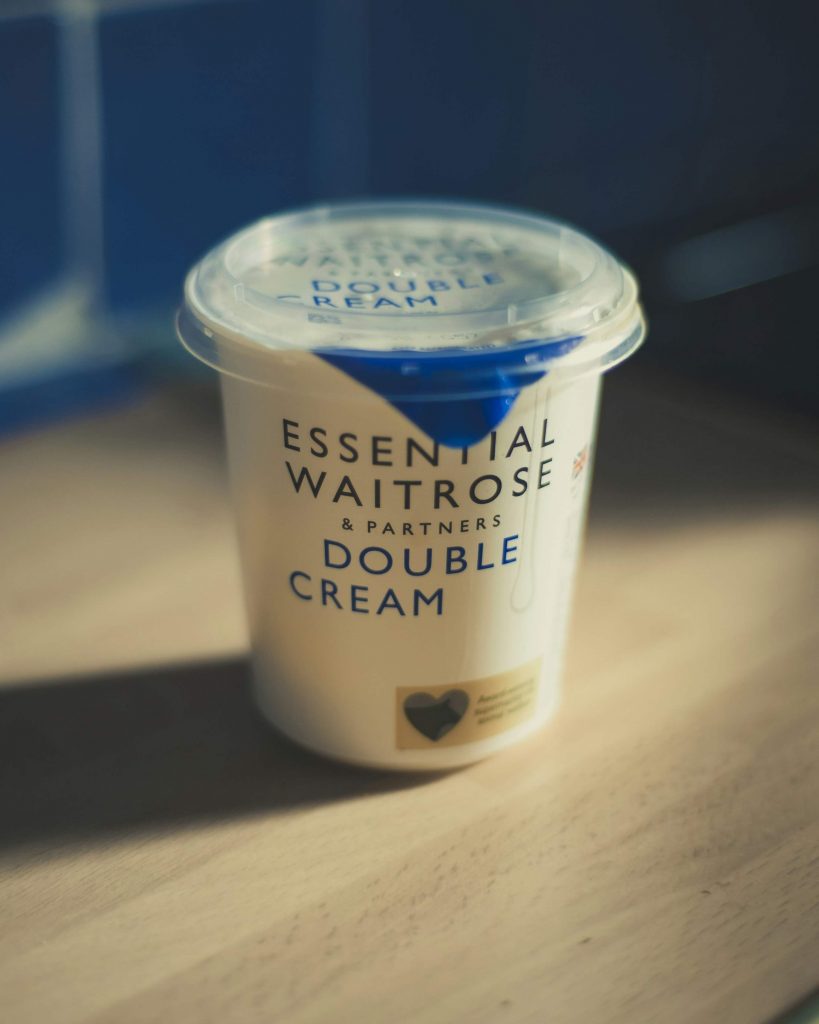
FAQs
How do you get batter to stick to chicken without eggs?
Getting batter to stick to chicken without eggs can be easily achieved by using binding agents such as milk, buttermilk, yogurt, or even mayonnaise. All of these liquids help create a sticky surface on the chicken, allowing the breading mixture to adhere well. If you have time, you can even soak the chicken overnight in the liquid, to help infuse flavor.
Egg alternative when deep frying chicken?
You might be surprised to learn that you already have a range of alternative egg ingredients in your pantry! When deep frying chicken and looking for an alternative to eggs in the batter, you have several options. Each of our suggestions will provide similar binding properties and help achieve a crispy, golden exterior. Buttermilk, or even standard milk, cream, flour, and avocado, are just some of the great alternatives for egg when deep frying chicken.
Summary for egg substitutes for frying chicken
Okay – that’s you all sorted with suitable egg substitutes for frying chicken.
Here’s a quick recap of the top eight egg substitutes for frying chicken:
- Flour and water: A simple paste made from flour and water can act as a binder for the breading. This results in a crispy exterior.
- Plain Yogurt: Adds moisture and tanginess while helping the breading adhere.
- Mashed Avocado: Provides a creamy texture and healthy alternative to eggs.
- Carbonated Water: Creates a light and crispy coating due to the fizziness.
- Buttermilk: Tenderizes the chicken and adds a subtle tangy flavor.
- Olive Oil: Can be used as a binder and adds richness to the breading.
- Mayonnaise: Adds moisture and richness, resulting in a crispy and flavorful crust.
- Heavy Cream: Imparts a rich and creamy texture to the breading, creating a decadent coating.
We have gathered together other facts on ingredients such as herbs, spices, oils, nuts, etc. if you would like to learn some more.
Or if you need to swap out another ingredient have a look at our Substitutes section.
